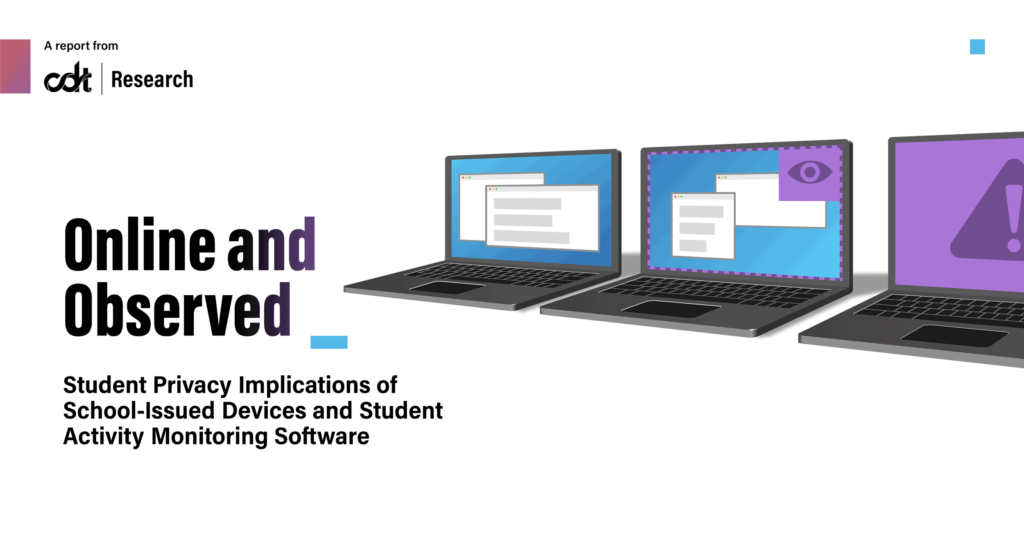CDT Research, Equity in Civic Technology, Privacy & Data
Report – Online and Observed: Student Privacy Implications of School-Issued Devices and Student Activity Monitoring Software

Many school districts across the nation expanded efforts to provide devices like laptops and tablets to students during the global pandemic in an effort to close the homework gap and address inequities in technology access. Part of this shift included the introduction of student activity monitoring software and other digital tools aimed in part at facilitating remote classroom management and driving student engagement. However, these tools can also be used in ways that are unduly intrusive. In this report, we examine whether students who receive school-issued devices are subject to more monitoring than their peers who have their own devices. We also examine local education agencies’ motivations in implementing monitoring and how they communicate about it with parents and students.
Building on recent CDT guidance on how schools could address privacy gaps in the implementation of remote education technology, this report presents findings based on virtual semi-structured interviews with nine individuals from five local education agencies (LEAs), including district level administrators and information technology (IT) directors.
This research uncovered seven main findings:
- Students using school-issued devices are monitored to a greater extent than their peers using personal devices;
- LEAs with wealthier student populations reported that their students are more likely to have access to personal devices, which are subject to less monitoring than school-issued devices;
- LEAs feel compelled to monitor student activity to satisfy perceived legal requirements and protect student safety;
- Most prevalent community concerns were focused on appropriate use of student activity monitoring data for disciplinary purposes;
- LEAs communicate privacy expectations to students and families, but are unsure about how much detail about student activity monitoring to include in those messages;
- LEAs are holding device and student activity monitoring software vendors accountable on privacy and security through data sharing and privacy agreements; and
- LEAs are looking for ways to improve the privacy and security protections for devices and data shared with student activity monitoring vendors.
For more information on our research, see our recent blog post discussing the findings, our press release for the report, and our related survey research and recommendations.
Download the list of references for this report in BibTeX (.bib) or in .RIS format. These files can be opened in commonly used reference management software.


